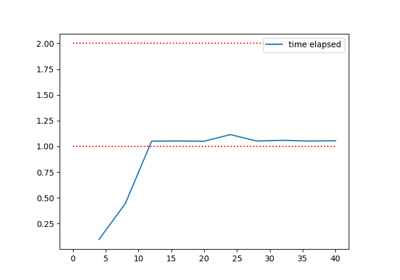The PyMFE example gallery
In this gallery, we will show a set of examples to help you to use this package and guide you on the meta-feature extraction process.
In the Meta-learning (MtL) literature, meta-features are measures used to characterize data sets and/or their relations with algorithm bias. According to Brazdil et al. (2008), “Meta-learning is the study of principled methods that exploit meta-knowledge to obtain efficient models and solutions by adapting the machine learning and data mining process”.
Meta-features are used in MtL and AutoML tasks in general, to represent/understand a dataset, to understanding a learning bias, to create machine learning (or data mining) recommendations systems, and to create surrogates models, to name a few.
Pinto et al. (2016) and Rivolli et al. (2018) defined a meta-feature as follows. Let \(D \in \mathcal{D}\) be a dataset, \(m\colon \mathcal{D} \to \mathbb{R}^{k'}\) be a characterization measure, and \(\sigma\colon \mathbb{R}^{k'} \to \mathbb{R}^{k}\) be a summarization function. Both \(m\) and \(\sigma\) have also hyperparameters associated, \(h_m\) and \(h_\sigma\) respectively. Thus, a meta-feature \(f\colon \mathcal{D} \to \mathbb{R}^{k}\) for a given dataset \(D\) is:
The measure :math: m can extract more than one value from each data set, i.e., \(k'\) can vary according to \(D\), which can be mapped to a vector of fixed length \(k\) using a summarization function :math: sigma.
In this package, We provided the following meta-features groups:
General: General information related to the dataset, also known as simple measures, such as the number of instances, attributes and classes.
Statistical: Standard statistical measures to describe the numerical properties of data distribution.
Information-theoretic: Particularly appropriate to describe discrete (categorical) attributes and their relationship with the classes.
Model-based: Measures designed to extract characteristics from simple machine learning models.
Landmarking: Performance of simple and efficient learning algorithms.
Relative Landmarking: Relative performance of simple and efficient learning algorithms.
Subsampling Landmarking: Performance of simple and efficient learning algorithms from a subsample of the dataset.
Clustering: Clustering measures extract information about dataset based on external validation indexes.
Concept: Estimate the variability of class labels among examples and the examples density.
Itemset: Compute the correlation between binary attributes.
Complexity: Estimate the difficulty in separating the data points into their expected classes.
Below is a gallery of examples:
Introductory Examples
Introductory examples for the PyMFE package.

Extracting meta-features from unsupervised learning
Advanced Examples
These examples will show you how to use some advanced configurations and tricks to code more comfortable.
Miscellaneous Examples
Miscellaneous examples for the pymfe package.

Listing available metafeatures, groups, and summaries

Plotting elapsed time in a meta-feature extraction
Examples for Developers
These examples are dedicated to any person that wish contribute to the development of the package or understand more about it. We expect that these examples show you the basic about PYMFE architecture and inspire you to contribute.











